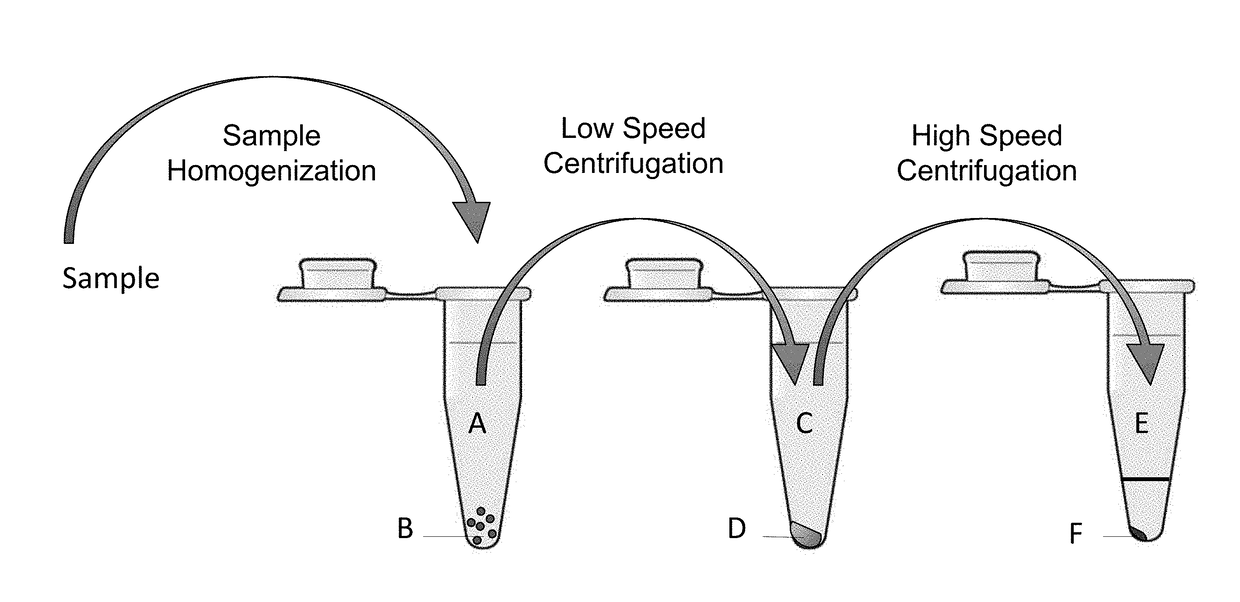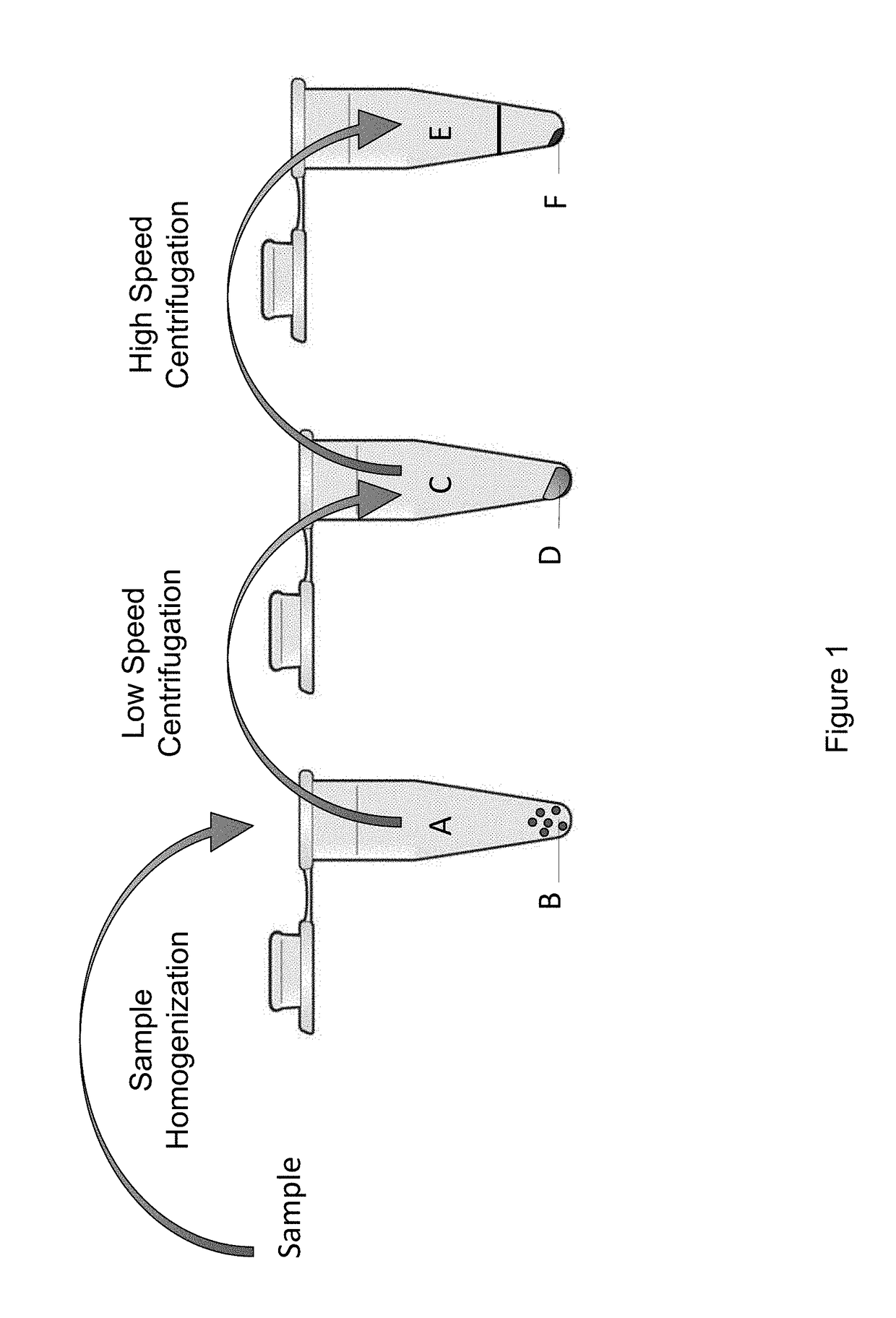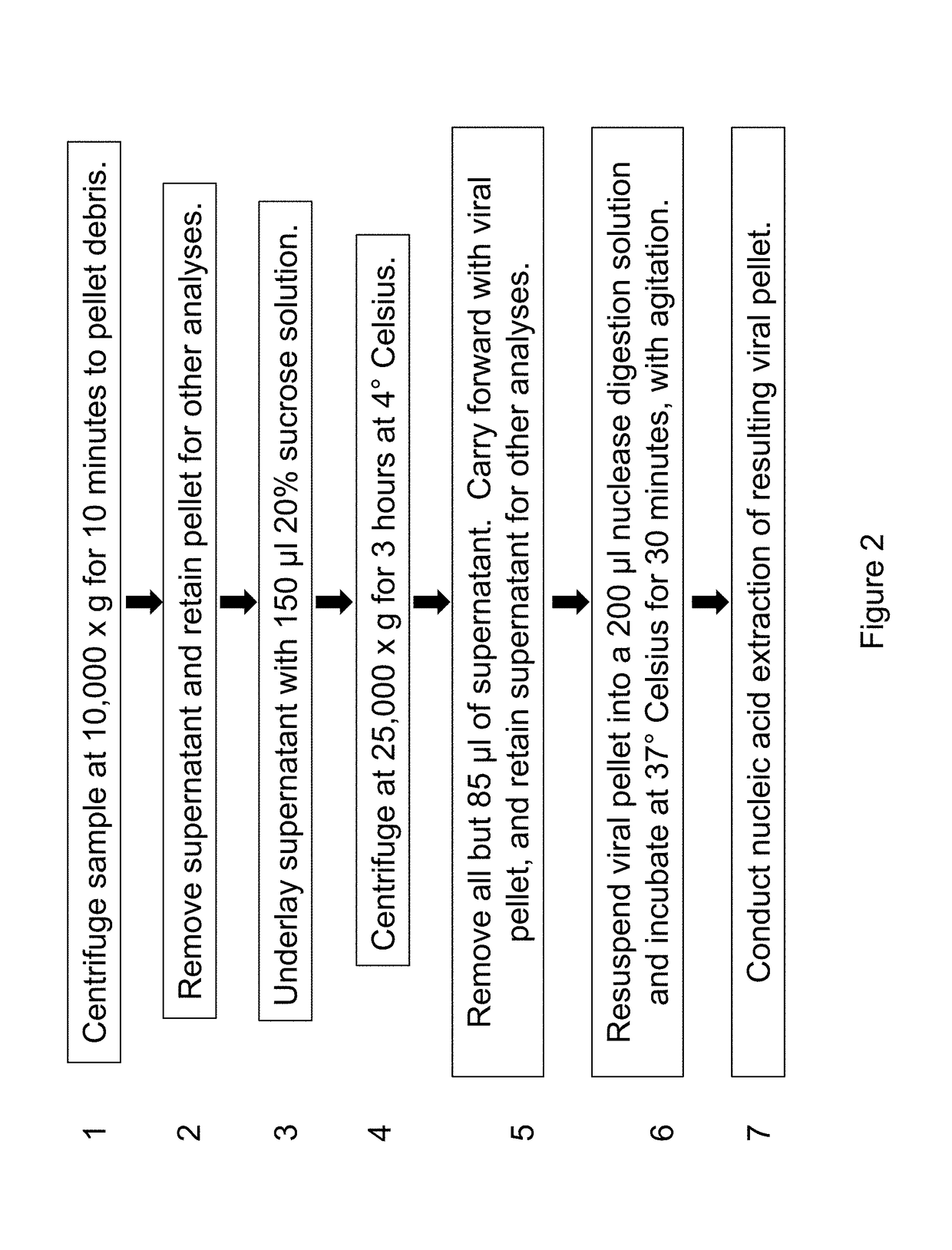Methods and systems for isolating and identifying nucleic acid from a plurality of microorganisms and viruses
a technology of nucleic acid and microorganisms, applied in the field of laboratory and bioinformatics methods for isolating, detecting, and characterizing microorganisms, can solve the problems of inability to reliably identify the nucleic acid level of all viruses and microorganisms in a sample, and inability to achieve robust methods. achieve th
- Summary
- Abstract
- Description
- Claims
- Application Information
AI Technical Summary
Benefits of technology
Problems solved by technology
Method used
Image
Examples
example 1
ethod for Preparing a Library of an Unbiased Population of Microbe Nucleic Acid from a Sample
[0104]Tissue preparations using bovine placenta samples were cut on dry ice into 1×2×2 mm sections. Tissue preparations using porcine lung were cut into sections of the same dimensions.
[0105]Samples of horse serum spiked with virus were prepared by obtaining horse serum from a commercial source and adding a mixture of cultured viruses, to simulate an infected sample. In this case the viruses contain genomes of single stranded RNA, double stranded RNA, single stranded DNA and double stranded DNA, to represent the major classes of viral genomes in nature.
[0106]In some embodiments of the disclosure, the samples were homogenized according to the following method. Tissue samples (≦25 mg) or virus-spiked serum were transferred to a chilled MoBio, Inc. bead-beating tube (2.0 mL, 2.38 mm metal beads, catalog number 13117-50) along with 600 μL TNE buffer (50 mM Tris-HCl, 150 mM NaC...
example 2
ntrifugation, and Centrifugation Through a Density Medium, Enrich Biological Samples for Viruses and Increase the Sensitivity of Virus Detection Using Metagenomic Methods
[0138]Two exemplary aspects of the disclosure were determined experimentally: centrifugation at high speed and centrifugation through a density medium. The methods were assessed for the ability to enrich for viruses from a starting population comprising heterogeneous nucleic acids, including host nucleic acid, thus enhancing detection of those viruses.
Preparing a Viral Horse Serum Bioreagent for Method Validation.
[0139]The methods of the disclosure described herein were applied to commercial horse serum “spiked” with a collection of cultured viruses. Specifically, 150 μL of horse serum was spiked with 20 μL of the virus mixture described in Table 2. This horse serum “bioreagent” was created for evaluation of the method for detecting viruses in cell-free fluids, such as serum, plasma, urine, cerebro-spinal fluid, wat...
example 3
Digestion of Biological Samples after High-Speed Centrifugation
[0144]Nuclease Digestion of Biological Samples after High-Speed Centrifugation to Pellet Viruses Increased the Sensitivity of Virus Detection Using Metagenomic Methods.
[0145]To evaluate the effectiveness of nuclease digestion to enrich a biological sample for viral nucleic acid, the protocol in Example 2, supra, was modified with the addition of a nuclease digestion step. In particular, conditions for applying nuclease digestion of the second pellet after serial centrifugation were investigated. Because viral nucleic acid was protected from digestion by the viral particle (the virion), treating the virus pellet with a mix of nucleases was used to remove free nucleic acid (“contaminating” nucleic acid from the host and other sources) under conditions where viral nucleic acid was “spared.”
[0146]A “cocktail” of nucleases was added to the second pellet isolated according to the methods in Example 2, supra. The nuclease cockt...
PUM
| Property | Measurement | Unit |
|---|---|---|
| density | aaaaa | aaaaa |
| density | aaaaa | aaaaa |
| size | aaaaa | aaaaa |
Abstract
Description
Claims
Application Information
 Login to View More
Login to View More - R&D
- Intellectual Property
- Life Sciences
- Materials
- Tech Scout
- Unparalleled Data Quality
- Higher Quality Content
- 60% Fewer Hallucinations
Browse by: Latest US Patents, China's latest patents, Technical Efficacy Thesaurus, Application Domain, Technology Topic, Popular Technical Reports.
© 2025 PatSnap. All rights reserved.Legal|Privacy policy|Modern Slavery Act Transparency Statement|Sitemap|About US| Contact US: help@patsnap.com



